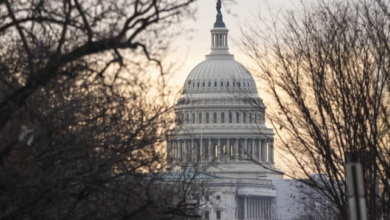US Escalates Measures Against Russia with 500 New Sanctions

In a significant move to tighten the pressure on Russia, the United States government has announced the imposition of 500 additional sanctions. This extensive package targets a broad spectrum of entities and individuals, aiming to curb Russia’s economic capabilities amidst ongoing geopolitical tensions.
These sanctions, heralded as a robust response to Russia’s recent actions, underscore the US’s commitment to leveraging economic measures as a tool for international diplomacy. By targeting key sectors, including technology, finance, and defense, the US seeks to isolate entities that are integral to Russia’s strategic operations on the global stage.
The decision to impose these sanctions was met with approval from various allies, highlighting a unified stance among Western countries concerning Russia’s actions. This coalition underscores the importance of international cooperation in addressing global security challenges and sends a strong message regarding the collective resolve to uphold international norms.
The sanctions are not just a diplomatic gesture but also a calculated strategy to impact Russia’s economy directly. By restricting access to vital financial markets and limiting the ability to engage in lucrative trade deals, the US aims to deter further actions deemed contrary to international peace and security.
While the immediate effects of these sanctions are yet to be fully realized, the long-term implications could be significant. Analysts suggest that these measures could lead to heightened tensions, affecting not only the targeted entities but also the global economy. The potential for retaliatory actions by Russia adds another layer of complexity to an already intricate international relationship.
As the US and its allies await Russia’s response, the global community remains vigilant. The effectiveness of sanctions as a tool for achieving diplomatic objectives continues to be a subject of debate, but this latest round of measures marks a decisive step in the US’s strategy to address what it perceives as a growing threat to international stability.





